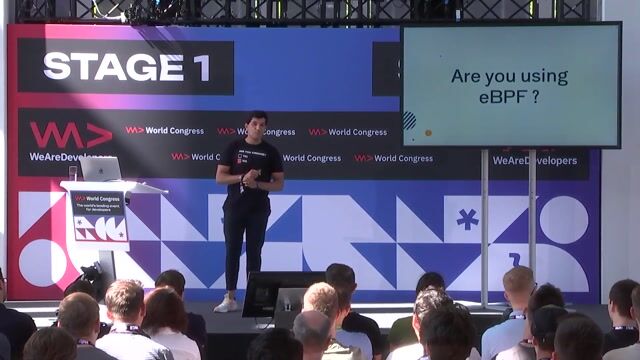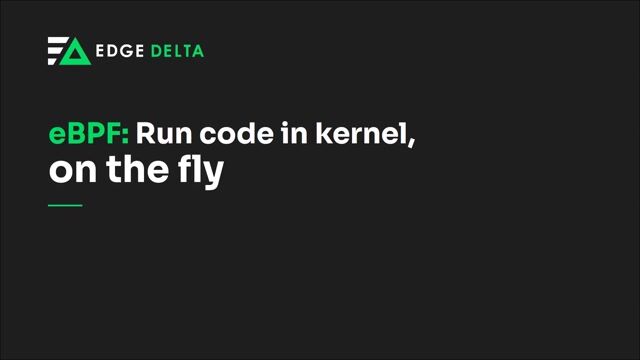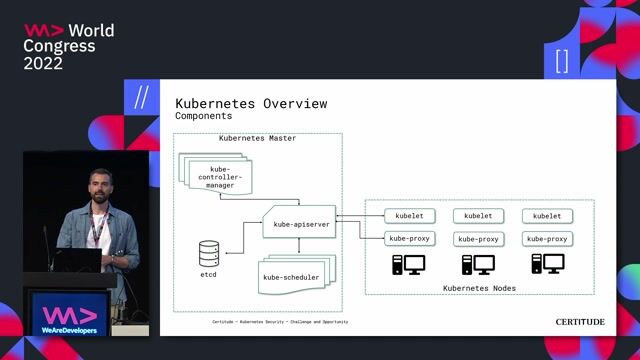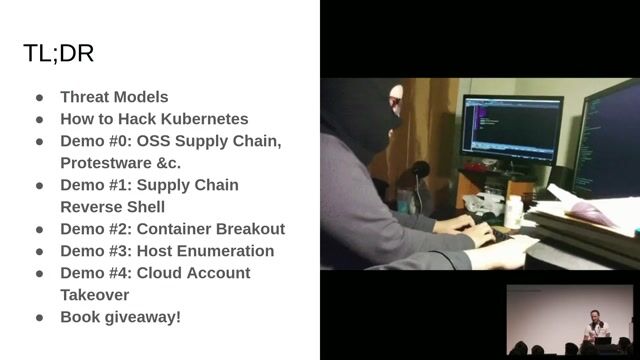Ayesha Kaleem
Gentle Introduction to eBPF
#1about 1 minute
The challenge of extending the Linux kernel
Adding new features to the Linux kernel is a slow and complex process, creating a bottleneck for developers who need new observability or security capabilities.
#2about 1 minute
Introducing eBPF as a kernel programmability solution
eBPF allows running custom programs in a sandboxed virtual machine inside the kernel, enabling new features without changing kernel source code.
#3about 1 minute
How eBPF programs are event-driven and written
eBPF programs are triggered by kernel events called hooks, and they are typically written in C or Python using libraries like BCC and compiled with LLVM.
#4about 1 minute
A practical "Hello World" eBPF code example
A simple program demonstrates how to write an eBPF function in C and use a Python script to load it and attach it to the execve system call.
#5about 1 minute
The eBPF runtime, verifier, and JIT compiler
Before execution, eBPF bytecode is validated by a verifier for safety and then compiled by a Just-In-Time (JIT) compiler into native machine code for performance.
#6about 1 minute
Using eBPF maps to share data efficiently
eBPF maps are key-value data structures that enable efficient data sharing between eBPF programs in the kernel and applications in user space.
#7about 2 minutes
Popular projects and companies using eBPF
Major open-source projects like Cilium, Falco, and Pixie leverage eBPF for networking and observability, and it is widely adopted by large tech companies.
Related jobs
Jobs that call for the skills explored in this talk.
aedifion GmbH
Köln, Germany
€30-45K
Intermediate
Network Security
Security Architecture
+1
VECTOR Informatik
Stuttgart, Germany
Intermediate
Senior
DevOps
Cloud (AWS/Google/Azure)
Matching moments
Featured Partners
Related Videos
 28:20
28:20Into the hive of eBPF!
Mohammed Aboullaite
 26:48
26:48An Applied Introduction to eBPF with Go
Ozan Sazak
 21:49
21:49A Hitchhikers Guide to Container Security - Automotive Edition 2024
Reinhard Kugler
 42:45
42:45Kubernetes Security - Challenge and Opportunity
Marc Nimmerrichter
 46:36
46:36Hacking Kubernetes: Live Demo Marathon
Andrew Martin
 30:51
30:51Why and when should we consider Stream Processing frameworks in our solutions
Soroosh Khodami
 56:15
56:15Kubernetes dev is fun, but setup and ops isn't! See a fun PaaS alternative to push any code, ipynbs or even just data!
Maurice Brinkmann
 44:00
44:00Enhancing Workload Security in Kubernetes
Dimitrij Klesev & Andreas Zeissner
Related Articles
View all articles



From learning to earning
Jobs that call for the skills explored in this talk.

MARKT-PILOT GmbH
Stuttgart, Germany
Remote
€75-90K
Senior
Terraform
Kubernetes
Cloud (AWS/Google/Azure)

BWI GmbH
München, Germany
Senior
Linux
DevOps
Python
Ansible
Terraform
+1


Broadcom
Charing Cross, United Kingdom
Senior
Azure
DevOps
VMware
vSphere
Openshift
+3

ardotec.
Bristol, United Kingdom
Remote
Senior
C++
Linux
Linux kernel

ardotec.
Sheffield, United Kingdom
Remote
Senior
C++
Linux
Linux kernel

ardotec.
Birmingham, United Kingdom
Remote
Senior
C++
Linux
Linux kernel

ardotec.
Liverpool, United Kingdom
Remote
Senior
C++
Linux
Linux kernel

ardotec.
Nottingham, United Kingdom
Remote
Senior
C++
Linux
Linux kernel